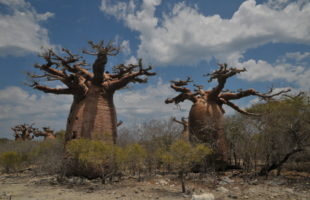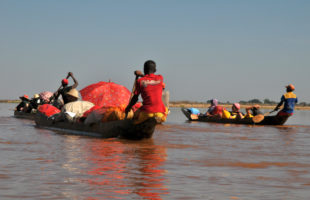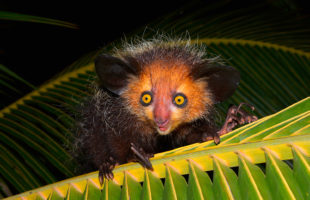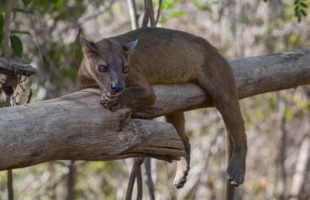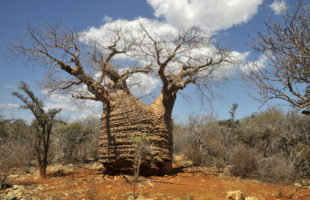Madagascar has many different ethnic groups, and most of them still have original lifestyles, ancient traditions and centuries of deep-rooted faith. But a small group of Madagascans live even closer to nature and the lives of their ancestors: The Mikea, Madagascar’s last nomads. The small ethnic group of about 1000 people gets its name from the forest of the same …
LesenSchlagwort-Archiv: Spiny forest
River cruise on the Tsiribinha
Tsiribinha is a quiet river that flows from northeastern Madagascar across the country until it flows south of Morondava into the Mozambique Canal. Its red colour comes from the sand of the same colour, which is carried by the current. From Miandrivazo, a small town about 200 km west of Antsirabe, you can do very nice dugout tours to Antsiraraka …
LesenLemurs, the spirits of the forest
Lemurs are probably Madagascar’s most famous mammals – not for nothing because they originally exist only there and nowhere else in the world. They belong to the strepsirrhine primates and are divided into about 100 different species. The word lemures comes from Latin and refers to the spirits of the dead of ancient Rome, who have little resemblance to the …
LesenAn extraordinary predator: The Fossa
Indeed it looks a little strange: The Fossa (Cryptoprocta ferox). The long-stretched body wears a thick tail of almost equal length, and the cat-like head is graced by quite sharp teeth and a big, round nose. And although the Fossa grows only knee-high, it is Madagascar’s largest predator. Both genders reach a maximum body weight of 12 kg, the males …
LesenNationalpark Tsimanampetsotsa
Tsimanampetsotsa: The park is named after its salt lake of the same name, which lies in the middle of the park area. The name means “lake in which no dolphins live”. Location: The Tsimanampetsotsa National Park is located in southwestern Madagascar in the Atsimo-Andrefana region. It is located about 950 km south of Antananarivo, the nearest cities are Anakao and …
Lesen MADAMAGAZINE Your Magazine about Madagascar
MADAMAGAZINE Your Magazine about Madagascar
